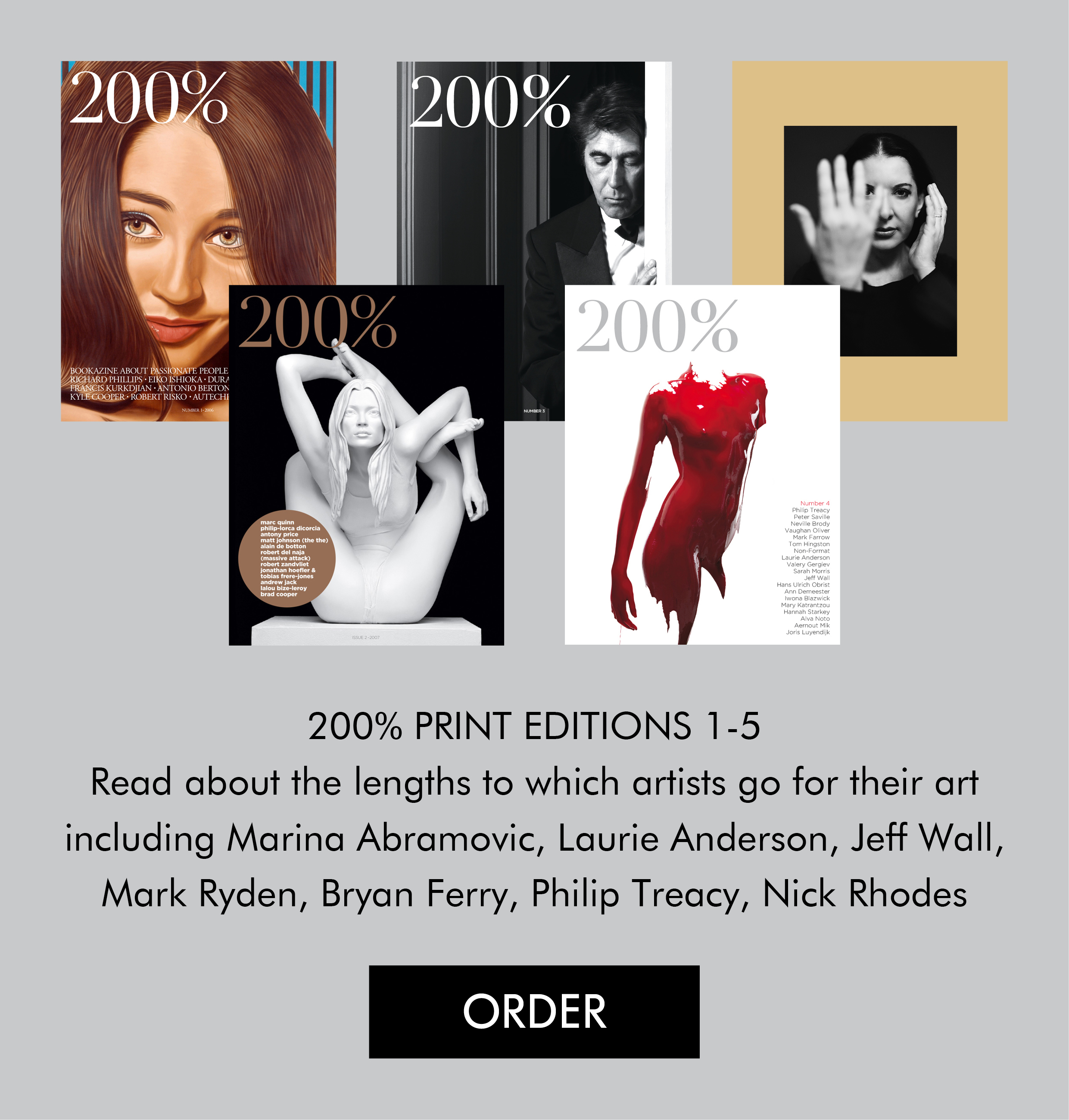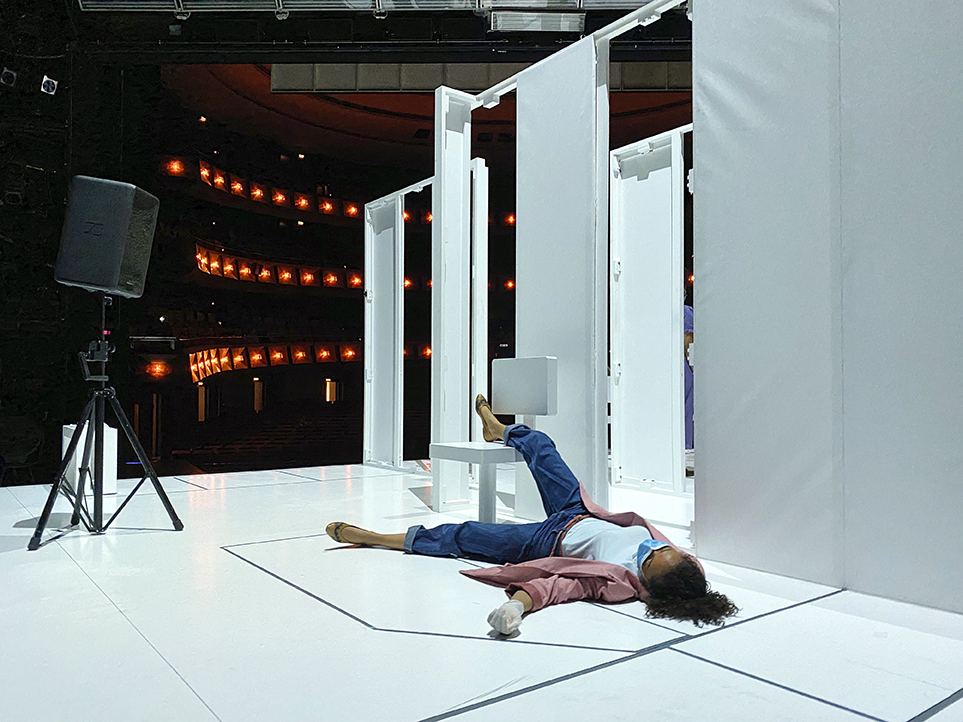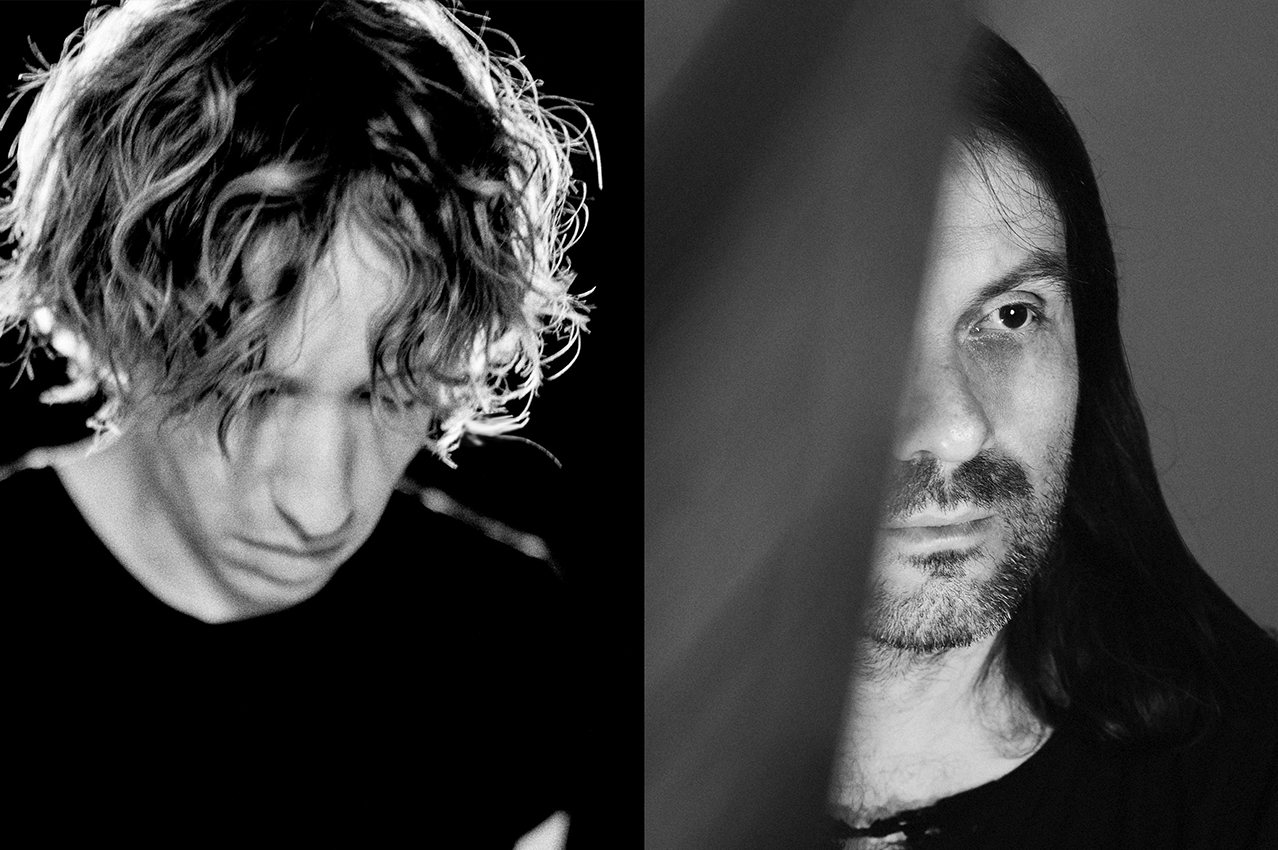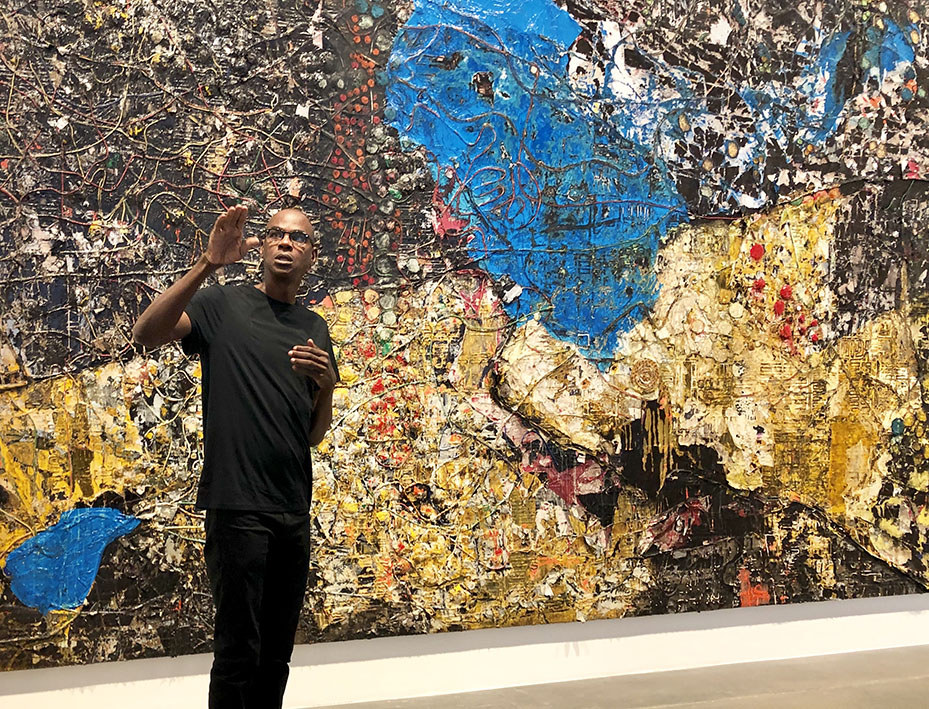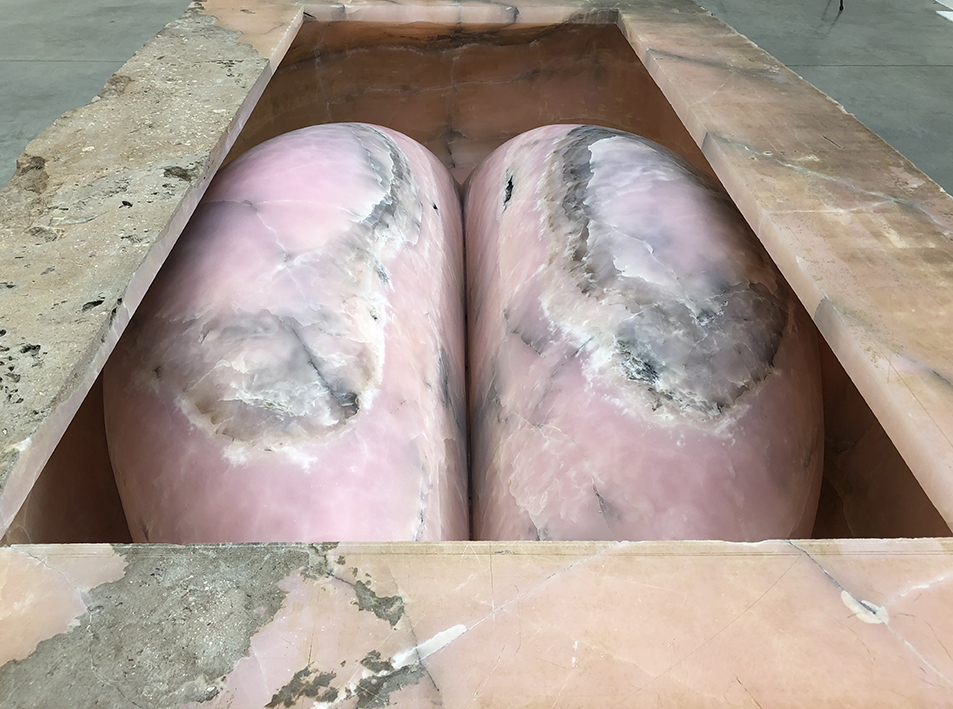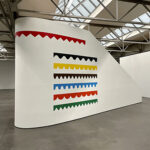 At the entrance to David Shrigley’s exhibition, ‘Brain Activity’, at the Hayward Gallery there is a door made out of black steel on which there is text saying: “Do not linger at the gate”. It sets the tone of an exhibition where humour is welcome.
-A handwritten text under a drawing of a naked, dead man lying on a slab: “Even on a mortuary slab you make me laugh”.
-A stuffed Jack Russell terrier holding a placard reading: “I’m Dead”.
-“Bread, milk, cornflakes, baked beans, tomatoes, aspirin, biscuits” – a shopping list engraved on a granite gravestone.
-A giant sculpture of the word DEATH standing in a landscape with a man looking at it commenting to a woman: “I don’t like it”.
These are just a few examples of Shrigley’s different types of humour ranging from the absurd to sinister and disarming. We humans tend to think that we’re the centre point of attention and that the world spins around us, but with his floppy disc illustration, Shrigley has the ability to put things in perspective, to remind us how trivial life can be. Humour can be the messenger for that. Shrigley’s sense of humor is appreciated by the visitors of his exhibition, aptly demonstrated by the fact that people were laughing out loud standing in front of his work. It is one of the responses of the visitors the artist sought, besides ‘intrigued confusion’ and ‘disquiet’.
The British born artist who lives in Glasgow, is best known for his unpolished, spontaneous drawings that make witty, uncanny comments on everyday life. They have been published in a series of books that are highly popular amongst the Shrigley devotees. His following is comparable with the fans of the Belgian cartoonist Kamagurka who makes a crueller, more vulgar, gross and cynical cartoons of appalling looking figures published daily in Belgian and Dutch newspapers.
‘Brain Activity’ features drawings, animated films, sculptures, music and photographs. For me, his drawings are the most convincing as, to put it in the introduction text stated on the wall: “Shrigley’s intuitive and candid art ultimately probes our human frailties and morals as much as it amuses and delights”.
Sculptures of little stick people making love on the hood of a car or a stuffed ostrich with no head – I’m not sure what to make of them. The artist comments in the exhibition brochure “I try to not say too much… The story is told inside the viewer’s head”. Obviously the viewer starts to wonder “why has the ostrich lost its head? Did it get stuck in the sand?”, but it would have been helpful if the artist had given the viewer a small clue as to what he wants us to take from his work which could lead to some kind of conclusion other than “what’s the point?” Or, is the point that there is no point?
The sculptures feel a bit contrived and lack the tantalizing friction between the text and illustration present in Shrigley’s drawings. They would have benefited from the same ruthless editing process that Shrigley applies to his drawings. In an interview with ‘Stylist’ the artist said he doesn’t accept writer’s block. “I work through it and even if the work is rubbish, I still make it but then I discard three quarters. The errors are real as I only draw everything once… I’m trying to capture the moment – albeit the moment is just some straggly lines drawn in pen.”
Another artist who uses humour in his work prominently, and was given a show by the Hayward Gallery before Shrigley, is George Condo. The figures in his paintings are grotesque, cartoonish and painted with the techniques of Old Master’s painting. This combination makes looking at his work confusing as it is funny but also tragic at the same time, being an ‘artistic counterpart’ of the best TV comedy characters such as Basil Fawlty or David Brent.
‘The Stockbroker’ (2002), a portrait of a man without any pants with his wife standing next to him, is an example of a serious painting that can be funny. During a conversation with the director of the Hayward Gallery, Ralph Rugoff, Condo said this painting was inspired by the stock market crash at the beginning of this century. In his raspy voice, the New York based artist explained that he wanted to visualize the people who were responsible for the crash. “When these people bungled the economy, the painting was about the idea ‘Why are we in the situation that we’re in? Because of people like them’. What do they [stockbrokers] look like in their skyscrapers trading bonds and stocks and everybody ending up being broke. That’s the kind of feeling when you have no relationship to why it’s all fallen apart”.
“There is an ironic contradictory in ‘The Stockbroker’ as you have to laugh at the sort of tragedy being depicted”, Condo responded when Rugoff remarked that there is something funny and tragic in the painting. The artist also added that there was a sense of relief in this work: “Isn’t it funny that these guys are in the predicament that they’re in. To a certain degree it is also kind of comforting, to say: ‘I’m glad it’s them, not me.’”
At the entrance to David Shrigley’s exhibition, ‘Brain Activity’, at the Hayward Gallery there is a door made out of black steel on which there is text saying: “Do not linger at the gate”. It sets the tone of an exhibition where humour is welcome.
-A handwritten text under a drawing of a naked, dead man lying on a slab: “Even on a mortuary slab you make me laugh”.
-A stuffed Jack Russell terrier holding a placard reading: “I’m Dead”.
-“Bread, milk, cornflakes, baked beans, tomatoes, aspirin, biscuits” – a shopping list engraved on a granite gravestone.
-A giant sculpture of the word DEATH standing in a landscape with a man looking at it commenting to a woman: “I don’t like it”.
These are just a few examples of Shrigley’s different types of humour ranging from the absurd to sinister and disarming. We humans tend to think that we’re the centre point of attention and that the world spins around us, but with his floppy disc illustration, Shrigley has the ability to put things in perspective, to remind us how trivial life can be. Humour can be the messenger for that. Shrigley’s sense of humor is appreciated by the visitors of his exhibition, aptly demonstrated by the fact that people were laughing out loud standing in front of his work. It is one of the responses of the visitors the artist sought, besides ‘intrigued confusion’ and ‘disquiet’.
The British born artist who lives in Glasgow, is best known for his unpolished, spontaneous drawings that make witty, uncanny comments on everyday life. They have been published in a series of books that are highly popular amongst the Shrigley devotees. His following is comparable with the fans of the Belgian cartoonist Kamagurka who makes a crueller, more vulgar, gross and cynical cartoons of appalling looking figures published daily in Belgian and Dutch newspapers.
‘Brain Activity’ features drawings, animated films, sculptures, music and photographs. For me, his drawings are the most convincing as, to put it in the introduction text stated on the wall: “Shrigley’s intuitive and candid art ultimately probes our human frailties and morals as much as it amuses and delights”.
Sculptures of little stick people making love on the hood of a car or a stuffed ostrich with no head – I’m not sure what to make of them. The artist comments in the exhibition brochure “I try to not say too much… The story is told inside the viewer’s head”. Obviously the viewer starts to wonder “why has the ostrich lost its head? Did it get stuck in the sand?”, but it would have been helpful if the artist had given the viewer a small clue as to what he wants us to take from his work which could lead to some kind of conclusion other than “what’s the point?” Or, is the point that there is no point?
The sculptures feel a bit contrived and lack the tantalizing friction between the text and illustration present in Shrigley’s drawings. They would have benefited from the same ruthless editing process that Shrigley applies to his drawings. In an interview with ‘Stylist’ the artist said he doesn’t accept writer’s block. “I work through it and even if the work is rubbish, I still make it but then I discard three quarters. The errors are real as I only draw everything once… I’m trying to capture the moment – albeit the moment is just some straggly lines drawn in pen.”
Another artist who uses humour in his work prominently, and was given a show by the Hayward Gallery before Shrigley, is George Condo. The figures in his paintings are grotesque, cartoonish and painted with the techniques of Old Master’s painting. This combination makes looking at his work confusing as it is funny but also tragic at the same time, being an ‘artistic counterpart’ of the best TV comedy characters such as Basil Fawlty or David Brent.
‘The Stockbroker’ (2002), a portrait of a man without any pants with his wife standing next to him, is an example of a serious painting that can be funny. During a conversation with the director of the Hayward Gallery, Ralph Rugoff, Condo said this painting was inspired by the stock market crash at the beginning of this century. In his raspy voice, the New York based artist explained that he wanted to visualize the people who were responsible for the crash. “When these people bungled the economy, the painting was about the idea ‘Why are we in the situation that we’re in? Because of people like them’. What do they [stockbrokers] look like in their skyscrapers trading bonds and stocks and everybody ending up being broke. That’s the kind of feeling when you have no relationship to why it’s all fallen apart”.
“There is an ironic contradictory in ‘The Stockbroker’ as you have to laugh at the sort of tragedy being depicted”, Condo responded when Rugoff remarked that there is something funny and tragic in the painting. The artist also added that there was a sense of relief in this work: “Isn’t it funny that these guys are in the predicament that they’re in. To a certain degree it is also kind of comforting, to say: ‘I’m glad it’s them, not me.’”
 For Condo there are two distinct types of humour in art: the artist who is funny and a painting that is funny. “If you consider Andy Warhol and the Campbell soup can you think that the painting of the Campbell soup can is not particularly funny, but it is funny that he would paint the Campbell soup can. When you think about Richard Prince – it’s the opposite; the joke paintings are really funny, but it’s not funny that he would paint a joke painting. It’s not from the same point of view or perspective”.
During the entertaining and sometimes hilarious conversation, Condo offered a possible explanation as to why audiences and critics find his work hard to grasp. “My style is to think of styles as subject matter to a certain degree and to combine elements of different styles to arrive at a singular image. I think that’s how I would classify it somehow, but as it’s about variations of styles that’s a bit confusing and I suppose why it’s not easy to get grasp on my work, critically”.
It raises the question whether there is an inclination by critics to take art that features humour less seriously as ‘serious art shouldn’t make you laugh’? Cliff Lauson, who curated Shrigley’s show, doesn’t think so: “Critics of contemporary, and even historical, art are very used to seeing and addressing artwork that deals with humour. It’s true that Shrigley is one of the few artists whose work has humour at its foundation, but I haven’t found that critics treat him any differently as he takes art seriously, even if his approach is humourous. Shrigley has considered this himself: ‘I’ve come to realise that the opposite of seriousness is not humour. The opposite of seriousness is incompetence. It’s somebody who isn’t really engaged with what they’re doing. And the opposite of humour is maybe sadness.’”
Matthew Collings, a British art critic, writer and broadcaster believes that the idiotic humour of Shrigley and Condo is taken all too seriously. “I think Condo’s art has a genuinely serious side, but it’s usually only approached by critics in a spirit of idiotic solemnity”. Collings continues: “They [critics] get the humour exactly, and ascribe an inappropriate significance to what is essentially trivial. What is serious about Condo (as opposed to Shrigley who isn’t serious at any level) is his engagement with a tradition of painterliness – the critics see Velazquez in this whereas in reality Condo doesn’t aim that high”.
Humour in art, it’s a topic for an ongoing discussion. It has, and it will continue to, occupy many artists in various forms and dosages from Picasso to Erwin Wurm to the surrealists René Magritte and Salvador Dali.
It is, therefore, not a coincidence or a deliberate choice of the Hayward Gallery to program two consecutive shows that places the spotlight on artists whose oeuvre is filled with humour. “The Hayward Gallery shows artwork by artists who are interesting, important, and relevant – some of them are indeed humorous, but this isn’t a deciding factor”, says Lauson. “A lot of artists touch upon humour at one point or another, even if it isn’t the primary subject matter of their work, because it is such an important part of everyday life”.
Most of all, though, isn’t humour the ultimate messenger for artists to address the big themes of life, such as death and mortality, in a light-hearted manner with a serious undertone?
Written by Thierry Somers
Pictures David Shrigley and George Condo ‘The Stockbroker’, 2002
David Shrigley, ‘Brain Activity’, Hayward Gallery until 13 May
For Condo there are two distinct types of humour in art: the artist who is funny and a painting that is funny. “If you consider Andy Warhol and the Campbell soup can you think that the painting of the Campbell soup can is not particularly funny, but it is funny that he would paint the Campbell soup can. When you think about Richard Prince – it’s the opposite; the joke paintings are really funny, but it’s not funny that he would paint a joke painting. It’s not from the same point of view or perspective”.
During the entertaining and sometimes hilarious conversation, Condo offered a possible explanation as to why audiences and critics find his work hard to grasp. “My style is to think of styles as subject matter to a certain degree and to combine elements of different styles to arrive at a singular image. I think that’s how I would classify it somehow, but as it’s about variations of styles that’s a bit confusing and I suppose why it’s not easy to get grasp on my work, critically”.
It raises the question whether there is an inclination by critics to take art that features humour less seriously as ‘serious art shouldn’t make you laugh’? Cliff Lauson, who curated Shrigley’s show, doesn’t think so: “Critics of contemporary, and even historical, art are very used to seeing and addressing artwork that deals with humour. It’s true that Shrigley is one of the few artists whose work has humour at its foundation, but I haven’t found that critics treat him any differently as he takes art seriously, even if his approach is humourous. Shrigley has considered this himself: ‘I’ve come to realise that the opposite of seriousness is not humour. The opposite of seriousness is incompetence. It’s somebody who isn’t really engaged with what they’re doing. And the opposite of humour is maybe sadness.’”
Matthew Collings, a British art critic, writer and broadcaster believes that the idiotic humour of Shrigley and Condo is taken all too seriously. “I think Condo’s art has a genuinely serious side, but it’s usually only approached by critics in a spirit of idiotic solemnity”. Collings continues: “They [critics] get the humour exactly, and ascribe an inappropriate significance to what is essentially trivial. What is serious about Condo (as opposed to Shrigley who isn’t serious at any level) is his engagement with a tradition of painterliness – the critics see Velazquez in this whereas in reality Condo doesn’t aim that high”.
Humour in art, it’s a topic for an ongoing discussion. It has, and it will continue to, occupy many artists in various forms and dosages from Picasso to Erwin Wurm to the surrealists René Magritte and Salvador Dali.
It is, therefore, not a coincidence or a deliberate choice of the Hayward Gallery to program two consecutive shows that places the spotlight on artists whose oeuvre is filled with humour. “The Hayward Gallery shows artwork by artists who are interesting, important, and relevant – some of them are indeed humorous, but this isn’t a deciding factor”, says Lauson. “A lot of artists touch upon humour at one point or another, even if it isn’t the primary subject matter of their work, because it is such an important part of everyday life”.
Most of all, though, isn’t humour the ultimate messenger for artists to address the big themes of life, such as death and mortality, in a light-hearted manner with a serious undertone?
Written by Thierry Somers
Pictures David Shrigley and George Condo ‘The Stockbroker’, 2002
David Shrigley, ‘Brain Activity’, Hayward Gallery until 13 May

